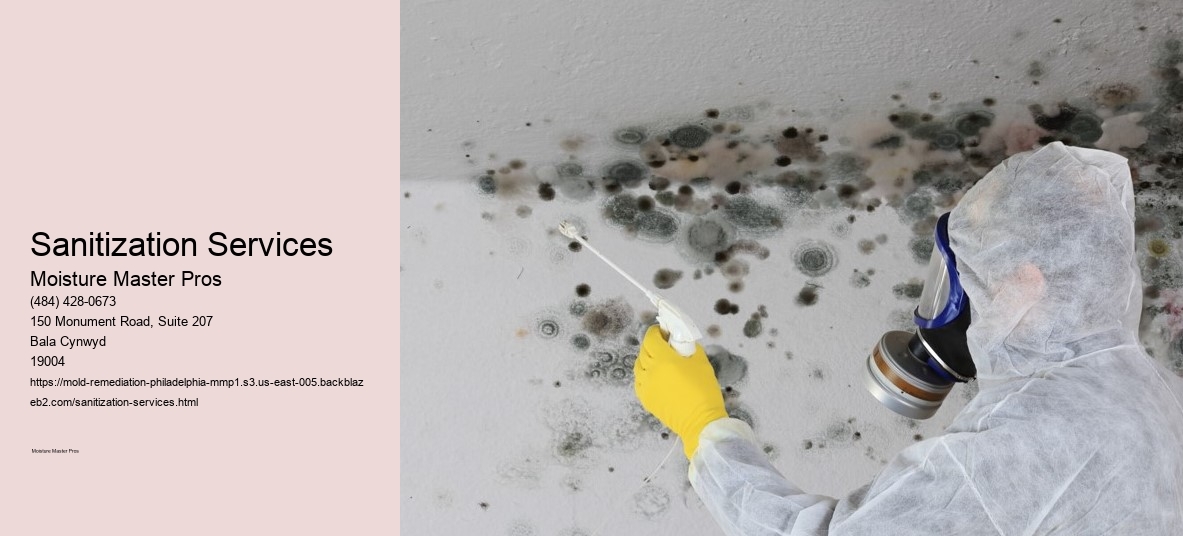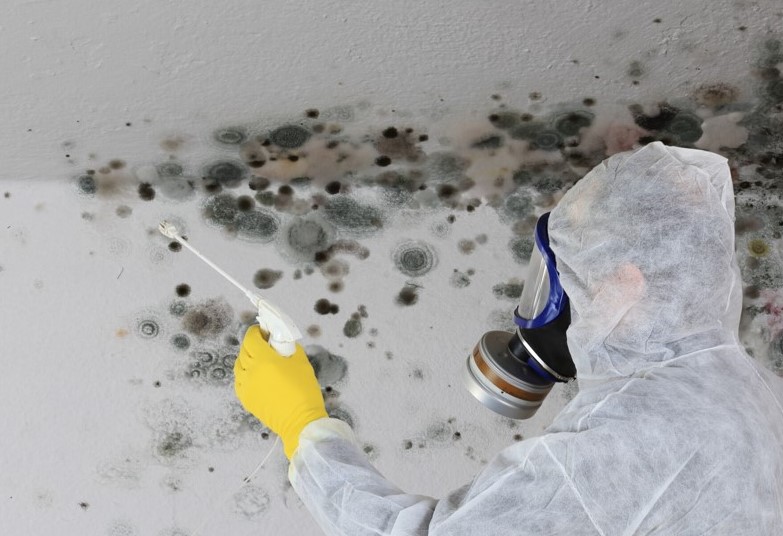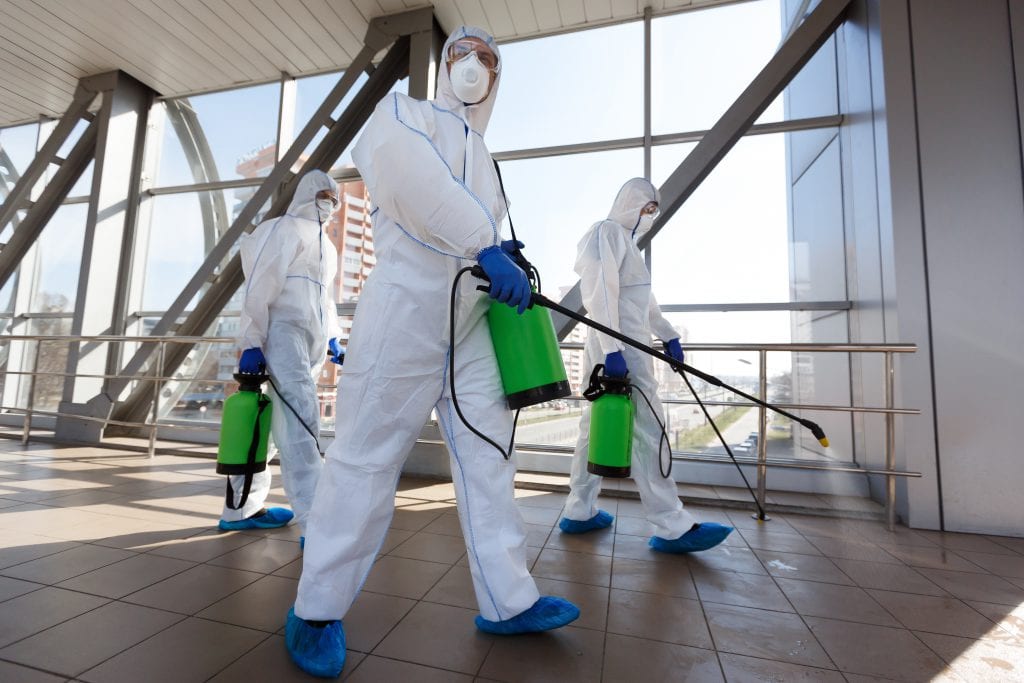

Challenges of DIY Mold Removal
One of the primary challenges of DIY mold removal is the incomplete eradication of mold colonies. Mold spores can remain dormant and quickly regenerate under favorable conditions, leading to recurring mold problems. Moreover, without proper training and equipment, homeowners may inadvertently spread mold spores to unaffected areas of the home, exacerbating the infestation.
Health Risks of DIY Mold Removal
Engaging in DIY mold removal poses significant health risks due to exposure to mold spores and cleaning agents. Inhalation of airborne mold particles during cleaning can trigger respiratory symptoms and allergic reactions. Direct contact with mold or cleaning chemicals may cause skin irritation, eye discomfort, or chemical burns if safety precautions are not followed meticulously.
Legal and Insurance Considerations
From a legal standpoint, DIY mold removal can impact home insurance coverage and liability. Insurance policies may stipulate that mold remediation must be conducted by certified professionals to ensure thoroughness and compliance with safety standards. Inadequate remediation efforts could invalidate insurance claims related to mold damage or subsequent health issues.
Cost Considerations
While DIY mold removal methods may seem cost-effective initially, they often result in higher long-term expenses. Professional mold remediation services may offer comprehensive solutions that address the root cause of mold growth, preventing future outbreaks and minimizing structural damage to the home. Comparing the costs of DIY efforts versus professional services underscores the value of investing in expert remediation.
Environmental Impact
In addition to health and financial considerations, DIY mold removal can have environmental repercussions. Improper disposal of mold-contaminated materials may contribute to pollution and environmental degradation. Water intrusion Professional remediation companies adhere to environmental regulations and employ eco-friendly practices for safe mold disposal and cleanup.
Benefits of Professional Mold Remediation
Choosing professional mold remediation offers numerous benefits, including specialized expertise, advanced equipment, and guaranteed results. Certified mold remediation specialists undergo rigorous training to identify mold species, assess moisture levels, and implement effective remediation strategies tailored to each situation. By hiring professionals, homeowners can rest assured that their property is in capable hands.
Choosing the Right Mold Remediation Professional
When selecting a mold remediation provider, homeowners should prioritize credentials, industry certifications, and client testimonials. Asking specific questions about remediation techniques, warranties, and post-remediation inspections can help ensure transparency and quality service delivery. A reputable mold remediation company will provide detailed estimates and recommendations based on thorough inspections of the affected property.
Case Studies and Examples
Real-life examples illustrate the potential pitfalls of DIY mold removal and highlight successful outcomes achieved through professional intervention. Stories of homeowners facing extensive mold damage or health complications due to DIY attempts underscore the importance of informed decision-making and expert assistance.
Educational Resources
For homeowners seeking reliable information on mold prevention and remediation, educational resources abound. Government health agencies, environmental protection organizations, and reputable remediation companies offer comprehensive guides, FAQs, and tips for maintaining a mold-free home environment. Read about the best Sanitization Services. Staying informed empowers homeowners to make proactive choices regarding mold management and indoor air quality.
Conclusion
In conclusion, while the allure of saving money and taking matters into your own hands may be tempting, DIY mold removal poses significant risks to your health, home, and legal standing. From inadequate remediation to potential health hazards and environmental impact, the drawbacks outweigh the benefits. By investing in professional mold remediation services, homeowners safeguard their well-being and property value while ensuring thorough, effective mold management solutions. Prioritizing safety and expertise is the key to achieving a mold-free environment and peace of mind.
The Cost of Mold Remediation: What to Expect
Introduction
Understanding the financial implications of mold remediation is crucial for homeowners and property managers alike. Mold growth not only poses health risks but can also lead to significant structural damage if left untreated. In this comprehensive guide, we'll delve into the various factors that influence mold remediation costs, what to expect during the process, and how to budget effectively.
What is Mold Remediation?
Mold remediation involves the process of identifying, containing, removing, and preventing mold growth within a structure.
Factors Influencing Mold Remediation Costs
Severity and Extent of Mold Growth
The extent of mold infestation heavily influences remediation costs. Minor surface mold is less costly to address compared to widespread mold affecting structural components.
Type of Mold Present
Certain types of mold, such as black mold (Stachybotrys chartarum), require specialized handling and may incur higher remediation costs due to health risks and stringent removal protocols.
Location Within the Property
Mold growth in hard-to-reach areas, like crawl spaces or inside walls, can increase labor costs and require specialized equipment for access and removal.
Accessibility Issues
Factors such as accessibility to affected areas and ease of containment play a role in determining the complexity and cost of remediation efforts.
Initial Assessment and Inspection Costs
Professional mold assessment and inspection are crucial steps in determining the scope of remediation needed. Costs typically include thorough inspection, sampling, and initial testing to identify the type and extent of mold present.
Mold Testing Costs
Different methods of mold testing, such as air sampling or surface sampling, vary in cost. Testing helps assess mold levels and types present, guiding remediation efforts and ensuring effective treatment.
Costs of Containment and Isolation
Containment is essential to prevent mold spores from spreading to unaffected areas during remediation. Costs include materials like polyethylene sheets, negative air machines, and labor for setting up and maintaining containment zones.
Removal and Cleanup Costs
Removal techniques depend on the surface and materials affected. From HEPA vacuuming to abrasive cleaning methods, costs vary based on the complexity of the removal process and disposal of contaminated materials.
Repair and Restoration Costs
Mold damage often requires repairs to affected surfaces and materials. Costs encompass structural repairs, replacement of damaged materials, and restoration of affected areas to their pre-damage condition.
Preventive Measures and Cost Savings
Proactive maintenance and moisture control measures can mitigate mold risks and reduce long-term remediation costs. Investments in dehumidifiers, proper ventilation, and regular inspections offer substantial savings over reactive remediation efforts.
Insurance Coverage for Mold Remediation
Homeowner's insurance may cover mold remediation costs under specific circumstances, such as sudden and accidental water damage. However, coverage limitations and exclusions often apply, necessitating a thorough review of policy terms.
DIY vs. Professional Mold Remediation Costs
While DIY mold removal kits exist, professional remediation offers expertise, comprehensive solutions, and adherence to safety standards. Factors like personal health risks and potential for incomplete remediation should be weighed against cost savings.
Choosing the Right Mold Remediation Company
Selecting a reputable remediation contractor involves evaluating experience, certifications, and customer reviews. Obtaining multiple quotes and asking detailed questions ensures transparency and quality in service delivery.
Legal and Health Considerations
Property owners have legal responsibilities to address mold issues promptly to ensure tenant safety and mitigate liability. Health risks associated with mold exposure underscore the importance of timely remediation and adherence to regulatory standards.
Case Studies and Examples
Real-world examples illustrate varying mold remediation scenarios and associated costs. Case studies provide insights into challenges faced, solutions implemented, and lessons learned in managing mold-related issues effectively.
Conclusion
In conclusion, understanding the costs of mold remediation requires consideration of numerous factors, from initial assessment and containment to removal and restoration. By budgeting effectively, leveraging preventive measures, and choosing qualified professionals, property owners can navigate mold remediation confidently and safeguard their investments and health.
How to Identify Mold in Your Home: Expert Tips
Mold is not just unsightly; it can pose serious health risks if left unchecked. Identifying mold early is crucial for maintaining a healthy home environment. In this guide, we'll explore expert tips on how to identify mold in your home, from understanding what mold is to practical steps you can take to detect its presence.
Introduction
Understanding the basics of mold and its potential health impacts.
Understanding Mold
What is mold?
Mold is a type of fungus that thrives in damp and humid conditions. It can grow on virtually any surface, especially where moisture is present.
Common types of mold found in homes
Different types of mold can appear in homes, including black mold (Stachybotrys chartarum), green mold (Penicillium), and others.
Signs of Mold Presence
Visible signs
Black spots or patches: Often found on walls, ceilings, or other surfaces.
Discoloration: Walls or ceilings may appear stained or have dark spots.
Odor clues
Musty or earthy smell: Mold often produces a distinctive smell that can indicate its presence.
Physical symptoms
Allergy-like reactions: Sneezing, coughing, or eye irritation may occur, especially in sensitive individuals.
Common Mold Hotspots
Bathrooms
Shower corners and grout lines
Under sinks and around faucets
Kitchens
Around refrigerator drip pans
Near dishwashers and sinks
Basements and attics
Leaky pipes and moisture buildup
Conducting a Visual Inspection
Steps to visually inspect for mold
Using a flashlight: Check dark areas and corners.
Checking behind furniture: Mold can hide behind and under furniture and appliances.
Identifying hidden mold
Air vents and ducts: Mold can spread through HVAC systems.
Using Moisture Meters and Hygrometers
Importance of moisture detection
Understanding moisture levels is key to mold prevention and detection.
How to use moisture meters
Tools that measure moisture content in various materials.
Understanding humidity levels with hygrometers
Devices that measure humidity levels in the air.
DIY Mold Testing Kits
Overview of mold testing kits
Types available: From basic to comprehensive kits.
Step-by-step use of DIY kits
Instructions for conducting tests and interpreting results.
Interpreting test results
Understanding what test results mean for mold presence in your home.
Hiring Professional Mold Inspectors
When to consider professional inspection
Signs that indicate the need for a professional assessment.
Qualifications to look for in a mold inspector
Important credentials and experience to consider.
What to expect during a professional inspection
Process and methods used by professionals to detect and assess mold.
Health Risks and Safety Precautions
Health risks associated with mold exposure
Potential health effects of prolonged mold exposure.
Safety precautions when dealing with mold


Protective measures to take when handling or cleaning mold-infested areas.
Using personal protective equipment
Recommended gear for handling mold safely.
Preventing Mold Growth
Tips for preventing mold growth
Effective strategies to minimize moisture and prevent mold.
Importance of moisture control
Keeping humidity levels low to discourage mold growth.
Proper ventilation and air circulation
Enhancing airflow to prevent stagnant, humid conditions.
Cleaning Up Small Mold Infestations
Steps to clean small mold patches
Safe methods for removing mold from surfaces.
DIY mold removal techniques
Natural and effective ways to clean mold using household items.
Cleaning products and natural remedies
Options for mold removal products that are safe and effective.
Addressing Large-Scale Mold Problems
Signs of extensive mold infestation
Indicators that mold may have spread extensively.
When to seek professional mold remediation
Conditions that warrant professional intervention.
Overview of mold remediation process
Steps involved in professional mold removal and remediation.
Understanding Mold Remediation Costs
Mold sporesFactors influencing mold remediation costs
Variables that affect the expense of mold removal services.
Cost-effective strategies for mold removal
Tips for managing mold removal costs efficiently.
Insurance coverage for mold damage
Insights into insurance policies and mold damage coverage.
Legal and Insurance Considerations
Insurance implications of mold damage
How insurance providers handle mold-related claims.
Legal rights and responsibilities
Homeowner responsibilities and legal recourse for mold issues.
Filing insurance claims for mold damage
Steps to take when filing a claim for mold-related damages.
Monitoring and Maintenance
Importance of regular monitoring
Why ongoing vigilance is necessary to prevent mold recurrence.
Schedule for mold prevention maintenance
Routine tasks to incorporate into home maintenance schedules.
Updating home maintenance practices
Adapting habits to reduce moisture and mold risks.
Conclusion
Summarizing the importance of proactive mold identification and prevention measures to maintain a healthy living environment.
Mold Remediation for Commercial Properties in Philadelphia
Mold, a pervasive issue in commercial properties across Philadelphia, poses significant health risks and structural concerns. Understanding the process of mold remediation is crucial for property owners and managers to maintain a safe and healthy environment for occupants. This comprehensive guide explores the causes of mold, the remediation process, regulatory considerations, and proactive measures to prevent mold recurrence.
Introduction to Mold Remediation
Leak detection
When choosing a mold remediation company in Philadelphia, PA, consider their experience, certifications, customer reviews, and the methods they use. Moisture Master Pros is a trusted name in the industry, known for our expertise, professionalism, and commitment to customer satisfaction.
The mold remediation process in Philadelphia, PA, typically involves several steps: Inspection and Assessment: Moisture Master Pros will inspect the property to identify mold growth and determine the extent of the problem. Containment: The affected area is contained to prevent the spread of mold spores. Air Filtration: High-efficiency air filters are used to capture mold spores from the air. Mold Removal: Contaminated materials are removed, and surfaces are cleaned and treated with antifungal and antimicrobial solutions. Restoration: Repaired and replaced materials to restore the affected area to its original condition.
Mold remediation involves several key steps, including inspection, containment, air filtration, mold removal, and restoration. Moisture Master Pros ensures each step is carried out meticulously to effectively remove mold and prevent recurrence.
The cost of mold remediation in Philadelphia, PA, can vary widely depending on the extent of the mold problem, the size of the affected area, and the complexity of the job. For a more accurate estimate, contact Moisture Master Pros for a comprehensive assessment and detailed quote.
During mold remediation, Moisture Master Pros will: Inspect and Assess: Identify the extent of mold growth. Contain: Seal off the affected area to prevent spore spread. Filter Air: Use air filtration systems to remove mold spores. Remove Mold: Clean and remove mold-infested materials. Restore: Repair and replace damaged areas to restore your home.